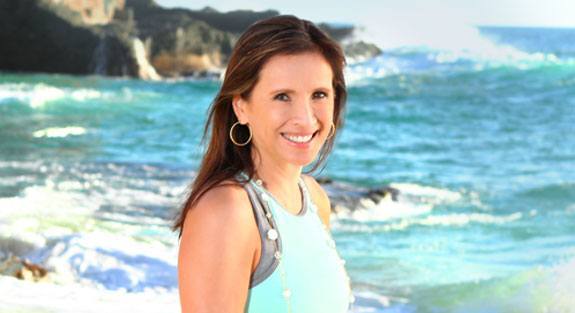Congratulations! You have worked hard to hit your goal weight. Now it is time to address that stubborn excess skin! Diet and exercise can certainly help to reduce “belly fat”, however, this may not completely resolve stretch mark damage, floppy abdominal skin, umbilical hernias, or Diastasis recti (splaying between the abdominal muscles resulting in muscle weakness). An abdominoplasty (Tummy Tuck) is a procedure Lavinia K. Chong, MD offers in Newport Beach to help you. Tummy Tucks seek to address excess skin that can be the result of pregnancy, aging, or substantial weight loss. The goal of an abdominoplasty is an improved silhouette.
Objectives of a Tummy Tuck may include:
- Remove stretch mark damaged, excess skin;
- Reduce flank and abdominal skin flap skin;
- Diastasis recti (splayed muscle) repair;
- Hernia repair;
- Creation of new umbilical opening;
- Reduction of pubic fat.
The longevity of great results is largely under the control of the patient, who should maintain a healthy lifestyle, including participating in a program of regular exercise and observing a balanced diet.
The Ideal Candidate
In determining whether a patient is a good candidate for an abdominoplasty, Dr. Chong will review any on-going health conditions, attitude towards scars, and smoking status (which can cause delays in wound healing), and whether a patient has sufficient post-operative support to ensure optimal recovery.
The results of a Tummy Tuck are long-lasting provided patients do not experience weight fluctuations or have additional pregnancies. We encourage women to consider whether you plan to have more children and be clear on your objectives before choosing surgical body contouring. While safe, full-term pregnancies are possible after tummy tucks, weight fluctuations may reverse much of your benefits.
During your surgical consultation, one of the following subtypes may be discussed:
- Major Abdominoplasty, including neo-umbilicoplasty (making a new opening for the belly button);
- Mini Tummy Tuck, in which the umbilicus remains unaltered and a smaller amount of skin above the pubic hairline is removed;
- Endoscopically-Assisted Lipoabdominoplasty, suitable for women whose abdominal skin is not excessive or stretch-marked but have laxity of the abdominal wall muscles. Combined with liposuction of the hips to improve the entire contour of the belly and flanks. Adjacent areas, such as the groin and pubis are often addressed by reducing excess fat and skin.
The Procedure
Abdominoplasty procedures are performed in our private Newport Beach Plastic Surgery Suite under Monitored Anesthesia Care (MAC sedation). During your procedure, the abdominal flap is raised, initially to the umbilicus, which is dissected free and subsequently to the rib cage, thereby facilitating the repair of any splayed muscles. Repair of the splayed muscles is accomplished by suturing the fibrous tissue (fascia) overlying the separation (diastasis recti) using permanent sutures. The redundant abdominal skin and the fat flap is trimmed. A new opening for the belly button is fashioned and the incision repaired, in multiple layers of absorbable sutures, over drains, which remain for 3-7 days. Drains assist with reducing the risk of fluid accumulation (seroma) and assist with the healing.
Tummy Tuck scars follow fashion and can be planned to lie within the usual borders of a patient’s preferred underwear or bikini. Depending on the amount of skin to be removed, the scar can extend from hip to hip, along the lower pubic area, and can include old hysterectomy or C-section scars. Often Silagen Scar Therapy is recommended to improve the scar appearance.
Post-Op Considerations
Swelling, minor wound care, and discomfort are anticipated for the first 4 weeks. Compression garments are used to support the abdomen once drains have been removed. These garments aid in enhancing skin retraction and supporting the surgical area.
Pre-op bowel prep is recommended to decrease intra-abdominal pressure which in turn:
- Allow more complete muscle repair, intraop;
- Diminish the possibility of pelvic DVT’s, in the periop period;
- Accelerate the resumption of normal bowel function, post-op.
Light activities and work can be resumed, as soon as you have weaned off pain meds, approximately 2 weeks after your surgery. Follow up visits are scheduled frequently, so additional needs and questions can be addressed. These follow-ups will be tended by a surgical tech, under the review and direction of Dr. Chong.
Recovery
Minimal activity and movement in the abdomen area is required for the first 2 weeks. During your regular follow-up appointments, Female plastic surgeon, Dr. Chong will provide guidance with additional post-care instructions catered to your specific needs.
Dr. Chong is committed to providing optimal care that will help you look and feel your best. She will be happy to personally consult with you to discuss your goals and to help you determine a treatment plan that is the best for you.
Tummy Tuck FAQS
Can I get pregnant after?
Absolutely. A full-term pregnancy is possible, but you may experience some relapse of your results, i.e. recurrent bulge & excess skin.
What happens to my belly button?
It is left attached to its original position if a mini tummy tuck (TT) is performed, but the position and appearance may be somewhat lower than desired. A new belly button is made by fabricating a new opening, in a standard TT, carefully planning the position, size & inverted appearance.
Will I still have stretch marks?
Perhaps. Depending on their location, stretch marks may be eliminated or relocated.
I have heard that it’s hard to have regular bowel movements afterward. Will I damage anything if I have to push to eliminate?
Everything we do tends to provoke constipation: pain, drugs (antibiotics, pain meds), dehydration, being off your regular activity schedule, etc. In order to facilitate TT patients’ recovery, we routinely recommend eating lightly, (full liquids), 2days pre-op, clear liquids 1-day pre-op & laxatives both days. It’s not a formal bowel prep, but it does help to off-load the colon, which in turn has benefits: 1. Reduction of abdominal distention enables tighter repair for the separation of muscles; 2. Easier return of bowel function; and 3. Reduces the risk of pelvic vein compression (PE). Even if you have to “push” to get started, don’t worry about undoing your TT; the repair has multiple layers & will not unravel.
What is the difference between a mini and a standard tummy tuck?
Mini TT removes excess skin between the pubic hairline & belly button as well as tightens weak abdominal muscles. Standard TT enables repair of the abdominal muscle weakness from the breastbone to the pubis, more complete reshaping of the excess and/or stretch mark damaged skin, the recreation of the belly button, and repair of any umbilical hernias at the expense of a slightly longer scar.
How long do I wear the garment for?
Abdominal binders are worn for 2 weeks or until the drains are removed. The compression garment assists in conforming the abdominal skin flap onto the repaired abdominal wall, which will remind the patient to observe activity restriction & will provide a surface to secure the drains. Some patients prefer to wear a Spanx type garment for up to a month afterward.
When can I go swimming/tanning?
Sports & activities requiring core strength should be postponed for at least 6-8 weeks. Tanning can be resumed sooner, 4-6 weeks but remember that you may not have the protective sensation of your lower abdominal flap for several months and can get sunburnt!
Will my scars show when wearing a bikini?
Good pre-op planning and being close to your ideal BMI is helpful. Aesthetic surgery is influenced by fashion and as the emphasis has shifted to low riders, our challenge is to conceal scars
What is a seroma? Will I get one?
A seroma is a collection of blood-tinged fluid that accumulates when a skin flap is raised off its usual position. Placement of drains, wearing an abdominal binder & limiting physical activity will usually prevent this complication. Massive weight loss patients are at higher risk for seroma, so “quilting” sutures are added. Treatment of a seroma requires frequent needle aspiration (removal), compression, limited activities & occasionally antibiotics.
How long do I need to take off work?
The appropriate recovery time depends on your duties (heavy lifting) and when you can resume driving. On average, 2 working weeks will suffice.
For more information on a Mommy Makeover or a Tummy Tuck, we invite you to schedule a consultation with female plastic surgeon, Dr. Lavinia K. Chong. Call our office in Newport Beach today at (949) 644-1400.




